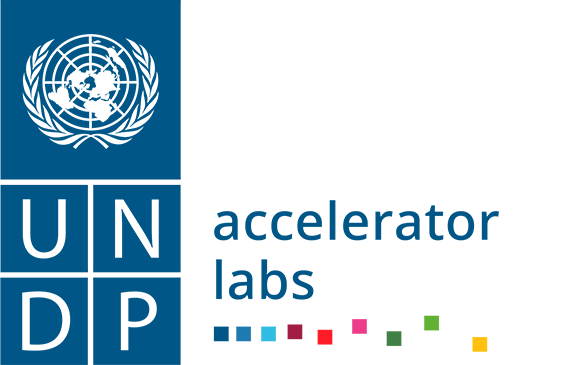–>
A model that digitizes community credit unions enabling them to provide financial services
What it does. The model digitizes community credit unions (CCUs), enabling them to offer integrated virtual services that facilitate credit, improve the savings culture, offer cashless payment soluons and increase the ease of cross-border transactioons. The model has four main components:
-
Payment Solutions: This pillar focuses on Technology adaptation and analytics, utilizing a digital platform such as an Android-Enabled App or USSD (Unstructured Supplementary Service Data) to enable efficient payment mechanisms.
-
Savings: This pillar involves the development of training modules to enhance financial literacy and capability. It includes training needs analysis, module development, and validation of training, all supported by an Android-Enabled App or USSD for accessibility.
-
Grant Credit Making: This pillar revolves around defining target beneficiaries and customer acquisition strategies. It involves rapid outreach, screening, and collateralization processes, along with product iteration and testing to ensure effective credit provision.
-
Interoperability: This pillar focuses on establishing policies for interoperable financial systems. It employs digital Payment Gateway Providers, and Analytics and Monitoring tools to ensure seamless integration and efficiency in digital financial transactions.
Additionally, this digital financial inclusion model can:
-
Enhance digital literacy skills: By training members how to effectively use digital technologies. Using practical demonstrations, interactive learning modules, and hands-on exercises to familiarize them with digital tools and platforms.
-
Reduce transaction costs: associated with fees charged for sending money, fees for cashing out at agent locations, and charges for transferring money between different mobile money platforms.
-
Expand the pool of resources for members: By pooling together more savings and resources & encouraging regular savings contributions from members. Exploring other opportunities for investment in income-generating projects.
-
Create new employment opportunities within the value chain: By setting up agent networks to facilitate cash-in and cash-out transactions, venturing into complementary business areas such as retail or distribution.
-
Mitigate ecosystem risks and enhance transparency.
Value proposition for the government/other partner. By implementing the DFI model, stakeholders can:
-
Extend financial services to vulnerable and underserved populations borderlands.
-
Foster inclusive economic growth and development through technology-enabled financial solutions that Leave No One Behind.
-
Promote inclusive green growth and climate resilience in marginalized communities.
-
Empower Community Credit Unions (CCUs) and Saving and Credit Cooperative Organizations (SACCOS) to provide accessible capital and support inclusive sustainable development.
-
Expand the market for financial services in borderlands, attracting technology solution providers and accelerating development.
Why and when to use it. The model for digital financial inclusion addresses informality of Borderland areas, which involve Cross border Traders Associations (CBTA’s), Community Credit Unions (CCU’s), and Village Savings & Loans Associations (VSLA’s). This model is particularly relevant when faced with the infrastructural challenges posed by Telco-off takers, tech startups, market aggressors, private sector, and basic investments by International Financial Institutions (IFIs). Additionally, it becomes essential for facilitating cross border transactions, especially with the involvement of willing digital platform developers within an enabling policy environment for cross border traders. Furthermore, the model serves as a crucial tool for ensuring security and safety, particularly through supporting effective policy enforcement and the implementation of policies on Gender Based Violence by border authorities.
Known issues and troubleshooting. The DFI model requires:
-
Collaborative partnerships: Between various eco-system stakeholders re: CCUs, technology providers, private sector, fintech’s among others.
-
Rigorous risk management and vulnerability: assessments for informed decision-making.
-
Capacity building: for sustainable management and operation beyond the support period.
-
Quality Assurance and measurement: Continuous monitoring and evaluation to address emerging challenges and ensure scalability.
-
Dynamic Management: Continuous trouble shooting to enhance performance of the model and enhance its efficiency.
-
Policy Misalignment: inconsistencies in the policies, regulations, or directives of neighboring nations sharing border regions. .
Context. Despite efforts by governments and international organizations, factors such as low financial literacy, inadequate infrastructure, and limited access to traditional banking institutions persist. Community Credit Unions (CCUs) and Village Savings and Loans Associations (VSLAs) have emerged as potential solutions but scaling their operations poses challenges. To address this urgent issue and uphold the principle of Leaving No One Behind, the UNDP-Africa Borderlands Centre convened a co-creation design workshop in Naivasha, Kenya, in May 2022. This workshop brought together over 40 experts from ten countries, who are specialized in the Financial Inclusion ecosystem and represented sub-sectors such as banking, insurance, cooperatives, technology, cross border traders among others. They addressed financial inclusion challenges in Africa’s borderlands and articulated a model harnessing financial technology (Fintech) to empower individuals and businesses, especially the most vulnerable, communities in border regions.
Cost. The total cost of relevant activities is about $240,000.
- Local Sensing: $15,000
- Innovation Design: $130,000
- Solution Exploration: $70,000
- Monitoring & Evaluation and Communication: $20,000
People.
-
Project Manager: Responsible for overall project coordination, stakeholder engagement, and monitoring.
-
Technical Experts: Provide support in digital technology development, integration, maintenance and troubleshooting.
-
Financial Advisors: Offer guidance on financial strategies, risk management, and legal and regulatory compliance.
-
Training Facilitators: Deliver capacity-building programs and provide ongoing support to beneficiaries.
Focal point. Kehinde-Bolaji, Lily-Murei, and Enock-Omweri.
Country, year, and language. Africa (Borderland Regions), 2022, English.
Resources.
*Concept Note and DFI Workshop Report. Read this report to understand the theoretical underpinnings of this model and read how about its key components in detail.
